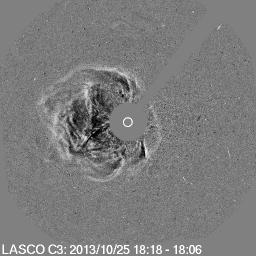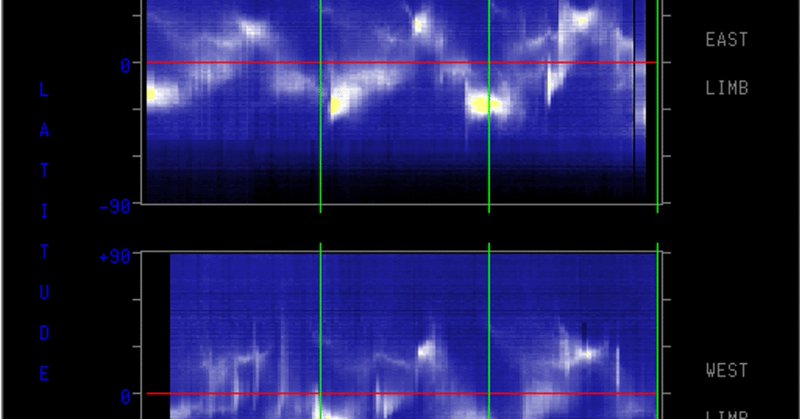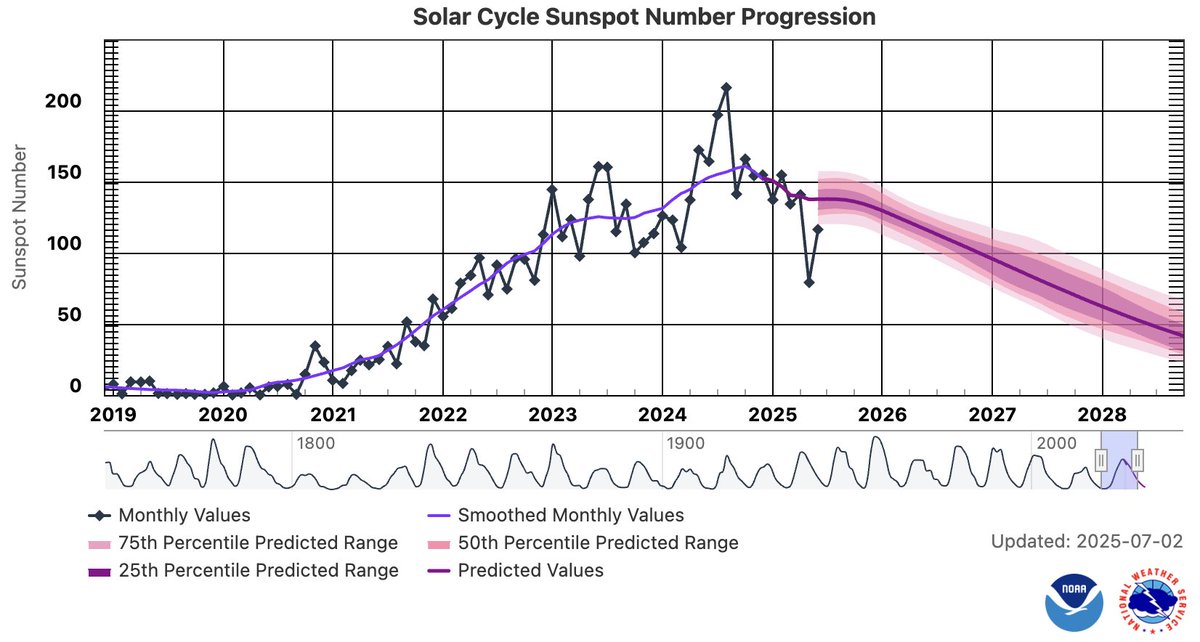
Halo CME
@halocme
Followers
29K
Following
6K
Media
3K
Statuses
4K
Solar physicist at LMSAL (alum UTkyAst). I believe space weather missions (for safe human space exploration) need a way higher investment than science missions.
Palo Alto, California
Joined October 2013
MOST POWERFUL FLARE IN SOLAR CYCLE 25. It was X9.0 in GOES X-ray measurement. It was quite eruptive, leaving a coronal wave. The eruption/CME seemed to result from magnetic reconnection rather than ideally from a pre-existing flux rope. It may come in less than 3 days.
127
2K
7K
Agreed. But from STEREO-A, the CME appeared from left, meaning it did not propagate too west. Also the Parker spiral may help it toward us. Yes, we need to see model runs.
Wow that westward bias really shows up in the coronagraphs… need to see what the models say, but this looks like it will be more of a clip than a direct impact at Earth.
2
22
90
Great review article on coronal dimmings in connection with CMEs from the Sun and other stars. This is must-read. It may be challenging to completely comprehend Section 5 "A new categorization" (from page 49 to 78). Table 1 may help.
link.springer.com
Living Reviews in Solar Physics - Coronal dimmings associated with coronal mass ejections (CMEs) from the Sun have gained much attention since the late 1990s when they were first observed in...
4
11
40
The reported filament disappearance in H-alpha was indeed an eruption also seen in coronal temperatures. And nice dimmings! I think this was responsible for the enhanced solar wind we are experiencing (but no storm yet due to northward field direction.)
Spot the difference – this small filament erupted overnight, expected to impact Earth and trigger a minor geomagnetic storm this weekend. #spaceweather
0
26
86
This shows GOES X-ray flux in solar cycle 25 up to now (the last data point: 7-Jul-2025 21:49) in one-minute time resolution. The peak appears to have passed, but we will be experiencing many more X-class flares and associated major eruptions in coming years.
This shows GOES X-ray flux over most of solar cycle 24 in one-minute resolution. The two biggest X-class flares occurred well after the cycle peak. Also, note weeks of no major (e.g., >M-class) flares during the peak of the cycle. We may still have big events in near future.
1
30
101
This shows GOES X-ray flux over most of solar cycle 24 in one-minute resolution. The two biggest X-class flares occurred well after the cycle peak. Also, note weeks of no major (e.g., >M-class) flares during the peak of the cycle. We may still have big events in near future.
@halocme Do you mean September 2017, or do you mean this phenomenon? Do you think there is a possibility that this phenomenon will occur in the near future?.
5
16
112
The NICT press release you referred to was issued on 2017-09-07 JST, highlighting the X9.3 flare on 09-06. But there was an X8.3 flare on 09-10, which looked more spectacular with a very fast CME. This video served in my pinned post for long time. Yes, let's hope that.
@halocme Do you mean September 2017, or do you mean this phenomenon? Do you think there is a possibility that this phenomenon will occur in the near future?.
2
26
79
Interesting. SDO/HMI B_LOS data indicate the magnetic field in Sun's north pole (latitude>70°, middle panel) fully reversed late in 2024. In the declining phase of a solar cycle, we may expect scary regions like AR 12673 (Sep 2017), and an elevated frequency of stealth CMEs.
Sunspot numbers are in for June 2025, and we’ve once again experienced the lowest sunspot numbers for 15 months! As more months pass, we can say with increasing confidence that we experienced solar maximum back in October 2024. ☀️
7
42
154
















